Petal Painting: DIY Watercolor Paints
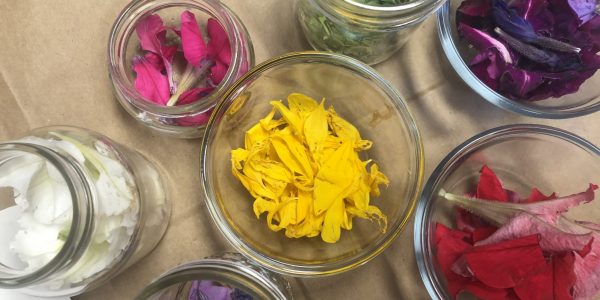
Do you have flowers in your garden or a special bouquet beginning to wilt and whither? Let’s give those beauties another life by creating our very own, low-waste watercolors! Take this opportunity to soak in the season and colors changing all around us.
Want to petal paint with us? Join us at the Welcoming Week: Multicultural Art Exhibition Thursday, September 16, 4:30 – 6:30 p.m. at The Environmental Center on 16 NW Kansas Ave, Bend, OR.
Or try it at home…
Here’s what you will need:
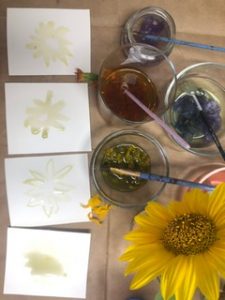
- Paper – any paper will do, but watercolor paper is a bit thicker and will be ideal if you plan to layer on watercolor
- A paint brush – you only need one or two if you can wash between colors, otherwise use a different paint brush for each color
- Jars – small, clear, glass jars work best to see colors change especially as you add acid and base
- Boiling water
- Sticks or spoons for stirring
- Flower petals
- Lemon juice
- Baking soda
Here are step-by-step instructions:
- Remove the petals off of a few flower heads and drop them into the jars. Separate petals by color and be sure to remove any green leaves or stems, otherwise the paint will likely turn a shade of brown.
- Pour boiling water over the petals – just enough water so the petals are covered. The water does really need to be boiling or close to it, not just warm, in order to strip the pigment. Start with a few tablespoons of water and add more as needed.
- Using your stir stick, spoon, or paintbrush, mix the petals in the water. The dye will change color immediately and continue to darken for a short while.
- Repeat steps 1-3 again to make two more small jars of paint. Prepare three jars of each color so you can experiment with the acid and base.
- Add a sprinkle of baking soda (bicarbonate) to one of the jars. The alkaline/basic solution with higher pH will shift to a darker color.
- Add a few drops of lemon juice in the third jar. The acidic solution with lower pH will shift to a lighter or neon color.
- Start painting! You can leave the petals in or sieve them out. If you get any petals on your paper while painting, you can dust them off once dry.
- When you’re done with your watercolors, simply compost the remaining petals.
Note: Especially if you are petal painting with children, please be aware of flowers that are unsafe for consumption.
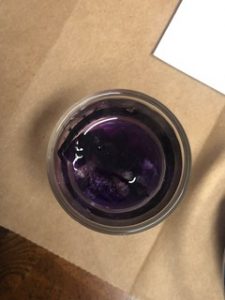
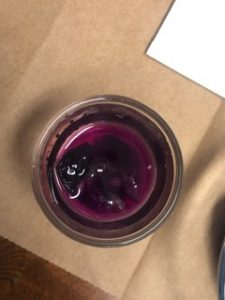

Tip: Here’s a recipe for my favorite shade: Violet petunias made for this dark purple (lavender on paper). It turned bright magenta (pink on paper) with lemon juice and dark blue (light blue on paper) with baking soda.
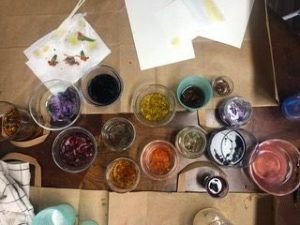
Painting is one of my favorite hobbies, so I was thrilled to try out these DIY watercolor paints, reducing the amount of plastic packaging waste and potentially harmful chemicals produced in creating most commercial paints.
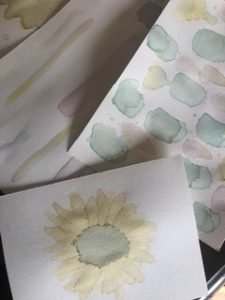
Connect with us on Instagram to share your paintings and let us know what other hobbies and activities you re-think to reduce, reuse, and recycle.